Search Results for event
Explore AI generated designs, images, art and prompts by top community artists and designers.
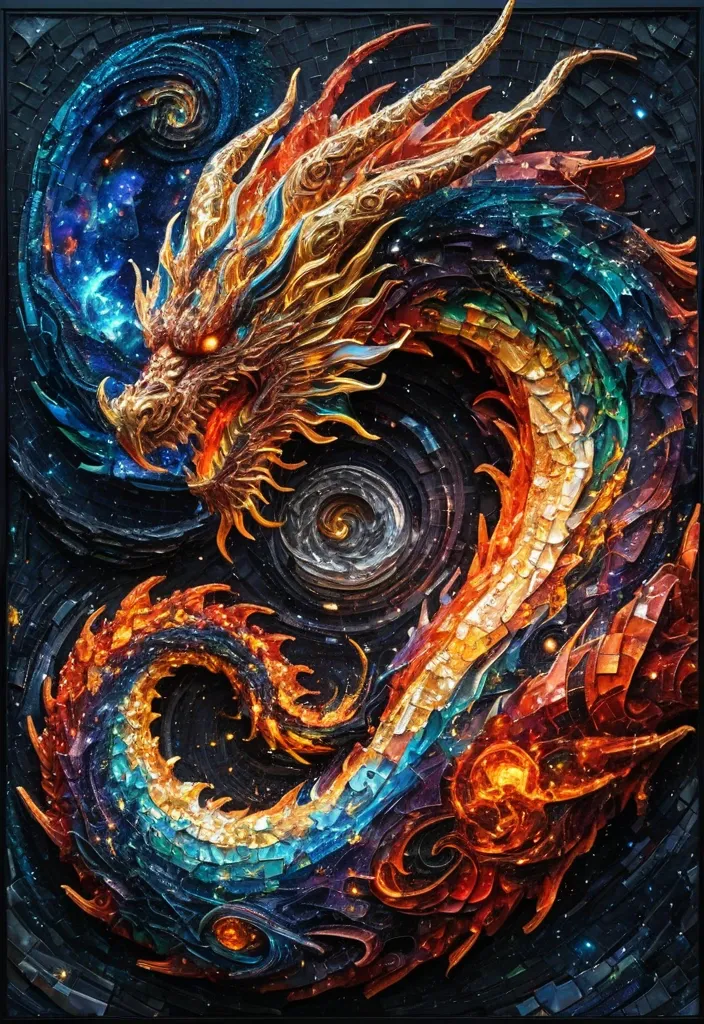

Logo design for an events company named La Mosca , specialized in lights and sound. Modern and minimalist style , with a creative representation of a fly (“mosca”) integrated subtly into the design. Use vibrant neon colors (blue , purple , green) combined with black background to evoke nightlife , party , and electronic music. Clean vector shapes , sharp lines , and futuristic typography for the text La Mosca. Professional , eye-catching , and versatile for both digital and print. ,

Logo design for an events company named La Mosca , specialized in lights and sound. Modern and minimalist style , with a creative representation of a fly (“mosca”) integrated subtly into the design. Use vibrant neon colors (blue , purple , green) combined with black background to evoke nightlife , party , and electronic music. Clean vector shapes , sharp lines , and futuristic typography for the text La Mosca. Professional , eye-catching , and versatile for both digital and print. ,

a young woman with long brunette hair , wearing a red silk blouse with gold details , holding her right arm straight up with both hands , dark blue or black background , subtle hand shadows creating a dramatic effect on her skin and arms , she appears to be looking directly at the camera , the photo is sharp with clear details of skin texture and jewelry , emphasizing her as the main subject , photograph has a high level of detail and clarity giving it a meticulous attention to her facial features , likely part of a wedding or event as it is well-lit. ,
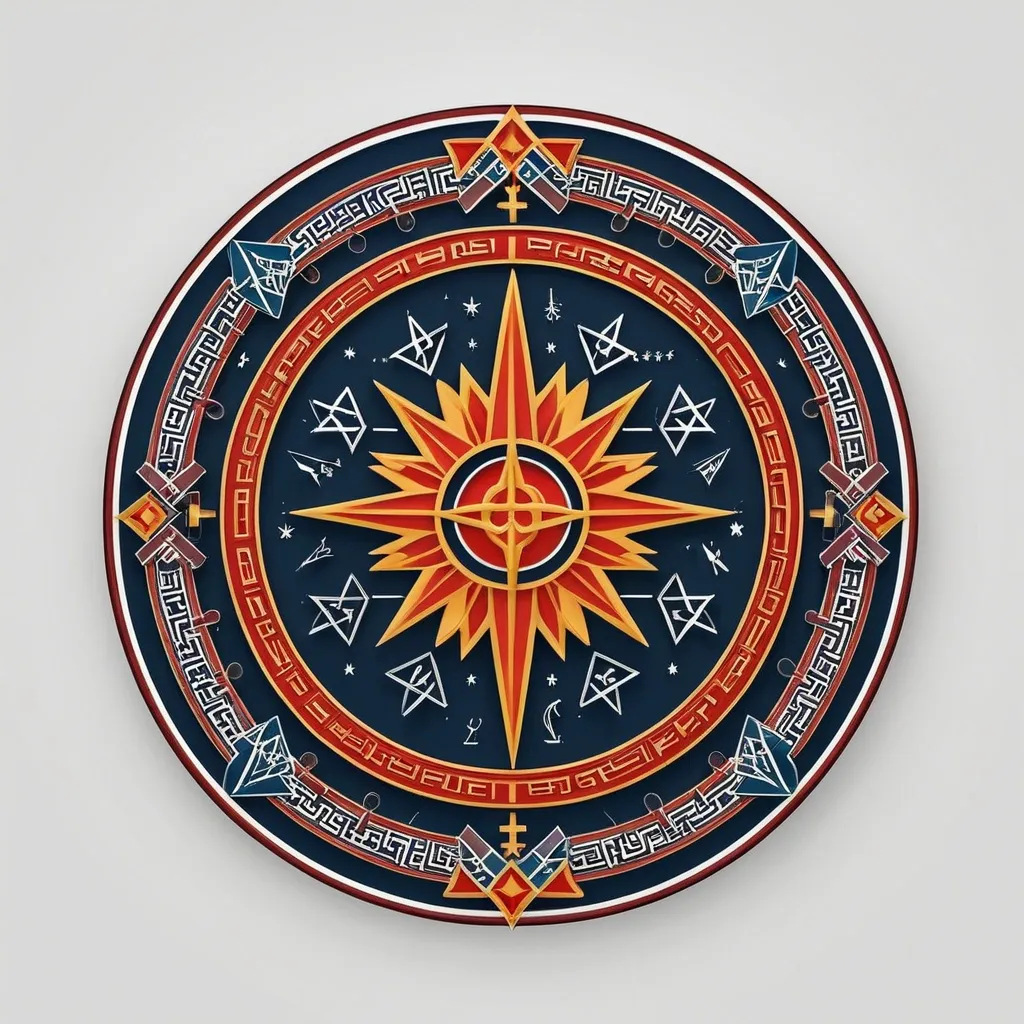
We need a logo for a conference of school teachers. The name is "Altyn Kazyk - education that changes the world". "Altyn Kazyk" (North Star) is a symbol of orientation , constancy and guiding value , which reflects the role of education in the development of society. The visual identity should emphasize the significance of the event , combining a modern style with the cultural codes of Kyrgyzstan , for example , national ornament , mountains , etc. ,
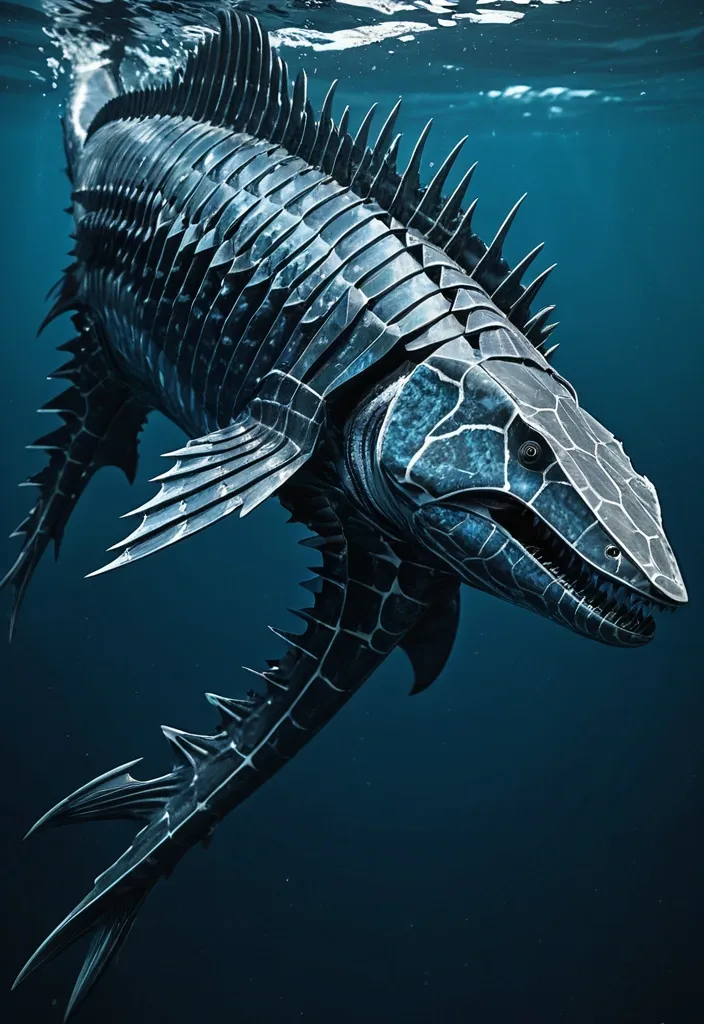
Orcinus Megalsaurus is a colossal marine hybrid stretching between 40 to 60 feet in length , weighing an imposing 50 to 75 tons. Its body is a streamlined fusion of powerful marine predators and ancient reptiles , designed for both speed and durability. Head & Jaws: Massive and robust jaws reminiscent of Mosasaurus Hoffmannii , lined with dozens of large , serrated teeth capable of slicing through the toughest prey. The jaw muscles are reinforced for crushing power , with an agile , flexible skull allowing it to swallow large creatures whole. Body: Covered in overlapping , bony , and tough Arapaima-inspired scales that provide formidable protection while maintaining flexibility for swift movement. The coloration is a gradient of deep oceanic blues and dark greys , with subtle mottled patterns for camouflage in deep waters. Spines & Armor: Sprouting venomous , long , sharp spines along its dorsal ridge , inspired by the Crown-of-Thorns starfish , these spines serve as both defense and offense , delivering painful , venomous wounds to predators or prey. Flippers & Tail: Enormous paddle-like front flippers derived from Archelon Ischyros , granting powerful swimming strokes. Its tail is flattened and ends in a strong fluke like the Mosasaurus , enabling bursts of speed up to 82 mph , matching the fastest sea animals. The tail's blubber and flexible musculature provide a springlike propulsion effect. Skin & Blubber: Beneath the scales lies a thick layer of dolphin-like blubber , providing insulation , buoyancy , and rapid healing properties. This blubber contains antimicrobial compounds that prevent infection from wounds and smooth the skin for hydrodynamic efficiency. Sensory & Communication: Equipped with the acute echolocation and vocalization abilities of Bigg’s Killer Whales , Orcinus Megalsaurus uses short-range , stealthy communication to coordinate ambush attacks. Its hearing and sonar are highly advanced , allowing it to detect prey at great distances. Mucus Secretion: When threatened , it can release a thick mucus cloud inspired by the Atlantic hagfish , confusing predators and protecting its skin from abrasion and parasites. Locomotion on Land: Although primarily aquatic , it can scoot or slide on land for short distances , using its powerful flippers akin to a leopard seal , allowing it to traverse beaches or shallow coasts. Regeneration: Thanks to the axolotl gene integration , Orcinus Megalsaurus can regenerate lost limbs , spines , and even parts of its internal organs , making it extraordinarily resilient. Abilities: Speed & Agility: Capable of reaching speeds of 45 to 82 mph in short bursts , making it one of the fastest marine predators ever. Its rigid pectoral fins can be tilted back like a black marlin to reduce drag during high-speed chases. Venomous Defense: Venomous spines deter attackers and can incapacitate prey or enemies with painful wounds. Stealth & Teamwork: Utilizes orca-like stealth and coordinated hunting tactics , ambushing prey with precision and communication that avoids detection. Healing & Immunity: Blubber layer accelerates wound healing and provides antimicrobial defense , ensuring survival from injuries sustained during hunts or fights. Mucus Defense: Can deploy mucus clouds to escape or confuse predators and parasites. Environmental Adaptability: Tolerates a wide range of salinity , from freshwater estuaries to deep oceanic waters , allowing it to exploit diverse hunting grounds. ,

Orcinus Megalsaurus is a colossal marine hybrid stretching between 40 to 60 feet in length , weighing an imposing 50 to 75 tons. Its body is a streamlined fusion of powerful marine predators and ancient reptiles , designed for both speed and durability. Head & Jaws: Massive and robust jaws reminiscent of Mosasaurus Hoffmannii , lined with dozens of large , serrated teeth capable of slicing through the toughest prey. The jaw muscles are reinforced for crushing power , with an agile , flexible skull allowing it to swallow large creatures whole. Body: Covered in overlapping , bony , and tough Arapaima-inspired scales that provide formidable protection while maintaining flexibility for swift movement. The coloration is a gradient of deep oceanic blues and dark greys , with subtle mottled patterns for camouflage in deep waters. Spines & Armor: Sprouting venomous , long , sharp spines along its dorsal ridge , inspired by the Crown-of-Thorns starfish , these spines serve as both defense and offense , delivering painful , venomous wounds to predators or prey. Flippers & Tail: Enormous paddle-like front flippers derived from Archelon Ischyros , granting powerful swimming strokes. Its tail is flattened and ends in a strong fluke like the Mosasaurus , enabling bursts of speed up to 82 mph , matching the fastest sea animals. The tail's blubber and flexible musculature provide a springlike propulsion effect. Skin & Blubber: Beneath the scales lies a thick layer of dolphin-like blubber , providing insulation , buoyancy , and rapid healing properties. This blubber contains antimicrobial compounds that prevent infection from wounds and smooth the skin for hydrodynamic efficiency. Sensory & Communication: Equipped with the acute echolocation and vocalization abilities of Bigg’s Killer Whales , Orcinus Megalsaurus uses short-range , stealthy communication to coordinate ambush attacks. Its hearing and sonar are highly advanced , allowing it to detect prey at great distances. Mucus Secretion: When threatened , it can release a thick mucus cloud inspired by the Atlantic hagfish , confusing predators and protecting its skin from abrasion and parasites. Locomotion on Land: Although primarily aquatic , it can scoot or slide on land for short distances , using its powerful flippers akin to a leopard seal , allowing it to traverse beaches or shallow coasts. Regeneration: Thanks to the axolotl gene integration , Orcinus Megalsaurus can regenerate lost limbs , spines , and even parts of its internal organs , making it extraordinarily resilient. Abilities: Speed & Agility: Capable of reaching speeds of 45 to 82 mph in short bursts , making it one of the fastest marine predators ever. Its rigid pectoral fins can be tilted back like a black marlin to reduce drag during high-speed chases. Venomous Defense: Venomous spines deter attackers and can incapacitate prey or enemies with painful wounds. Stealth & Teamwork: Utilizes orca-like stealth and coordinated hunting tactics , ambushing prey with precision and communication that avoids detection. Healing & Immunity: Blubber layer accelerates wound healing and provides antimicrobial defense , ensuring survival from injuries sustained during hunts or fights. Mucus Defense: Can deploy mucus clouds to escape or confuse predators and parasites. Environmental Adaptability: Tolerates a wide range of salinity , from freshwater estuaries to deep oceanic waters , allowing it to exploit diverse hunting grounds. ,

four-panel dress , is a traditional Vietnamese garment , particularly associated with the northern region. It's a flowing , tunic-like dress typically worn with a long skirt , an ancient bodice called yếm , and a sash. While no longer a common sight in daily life , it remains an important part of festivals and cultural events , especially in Northern Vietnam. Key Features and Components: Four Panels: The name "Áo Tứ Thân" literally translates to "four-paneled shirt , " referring to the two front and two back panels that make up the dress's tunic. Tunic: The tunic is typically made from plain , dark fabric (historically , for practicality) , but can also be found in brighter colors for special occasions. Skirt: A long skirt , often black , is worn underneath the tunic. Yếm: The yếm is a traditional bodice , often white or bright pink , worn as an undergarment. Sash: A silk sash is tied around the waist , over the tunic , and dangles down like ribbons. Cultural Significance: Northern Vietnam: The Áo Tứ Thân is most closely associated with the northern region of Vietnam , where it is still seen in festivals and traditional ceremonies. Rural Areas: It's more commonly worn in rural areas than in urban centers , where the simpler Áo Bà Ba is more prevalent. Special Occasions: The Áo Tứ Thân is often worn during festivals like the Lim Festival , which celebrates traditional folk songs. ,

four-panel dress , is a traditional Vietnamese garment , particularly associated with the northern region. It's a flowing , tunic-like dress typically worn with a long skirt , an ancient bodice called yếm , and a sash. While no longer a common sight in daily life , it remains an important part of festivals and cultural events , especially in Northern Vietnam. Key Features and Components: Four Panels: The name "Áo Tứ Thân" literally translates to "four-paneled shirt , " referring to the two front and two back panels that make up the dress's tunic. Tunic: The tunic is typically made from plain , dark fabric (historically , for practicality) , but can also be found in brighter colors for special occasions. Skirt: A long skirt , often black , is worn underneath the tunic. Yếm: The yếm is a traditional bodice , often white or bright pink , worn as an undergarment. Sash: A silk sash is tied around the waist , over the tunic , and dangles down like ribbons. Cultural Significance: Northern Vietnam: The Áo Tứ Thân is most closely associated with the northern region of Vietnam , where it is still seen in festivals and traditional ceremonies. Rural Areas: It's more commonly worn in rural areas than in urban centers , where the simpler Áo Bà Ba is more prevalent. Special Occasions: The Áo Tứ Thân is often worn during festivals like the Lim Festival , which celebrates traditional folk songs. ,
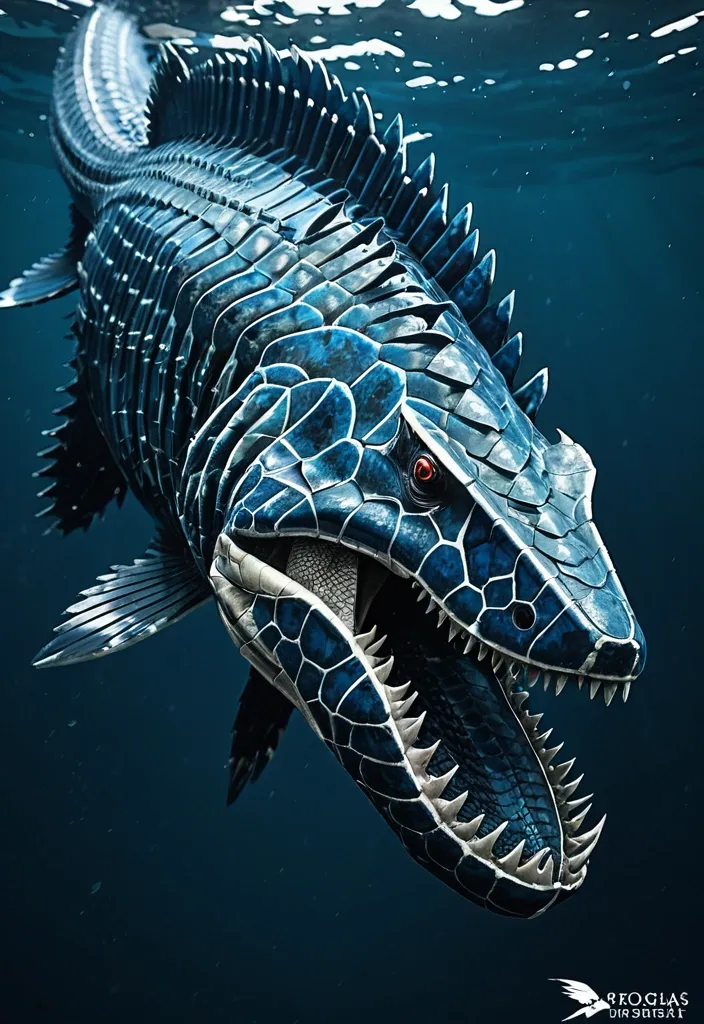
Orcinus Megalsaurus is a colossal marine hybrid stretching between 40 to 60 feet in length , weighing an imposing 50 to 75 tons. Its body is a streamlined fusion of powerful marine predators and ancient reptiles , designed for both speed and durability. Head & Jaws: Massive and robust jaws reminiscent of Mosasaurus Hoffmannii , lined with dozens of large , serrated teeth capable of slicing through the toughest prey. The jaw muscles are reinforced for crushing power , with an agile , flexible skull allowing it to swallow large creatures whole. Body: Covered in overlapping , bony , and tough Arapaima-inspired scales that provide formidable protection while maintaining flexibility for swift movement. The coloration is a gradient of deep oceanic blues and dark greys , with subtle mottled patterns for camouflage in deep waters. Spines & Armor: Sprouting venomous , long , sharp spines along its dorsal ridge , inspired by the Crown-of-Thorns starfish , these spines serve as both defense and offense , delivering painful , venomous wounds to predators or prey. Flippers & Tail: Enormous paddle-like front flippers derived from Archelon Ischyros , granting powerful swimming strokes. Its tail is flattened and ends in a strong fluke like the Mosasaurus , enabling bursts of speed up to 82 mph , matching the fastest sea animals. The tail's blubber and flexible musculature provide a springlike propulsion effect. Skin & Blubber: Beneath the scales lies a thick layer of dolphin-like blubber , providing insulation , buoyancy , and rapid healing properties. This blubber contains antimicrobial compounds that prevent infection from wounds and smooth the skin for hydrodynamic efficiency. Sensory & Communication: Equipped with the acute echolocation and vocalization abilities of Bigg’s Killer Whales , Orcinus Megalsaurus uses short-range , stealthy communication to coordinate ambush attacks. Its hearing and sonar are highly advanced , allowing it to detect prey at great distances. Mucus Secretion: When threatened , it can release a thick mucus cloud inspired by the Atlantic hagfish , confusing predators and protecting its skin from abrasion and parasites. Locomotion on Land: Although primarily aquatic , it can scoot or slide on land for short distances , using its powerful flippers akin to a leopard seal , allowing it to traverse beaches or shallow coasts. Regeneration: Thanks to the axolotl gene integration , Orcinus Megalsaurus can regenerate lost limbs , spines , and even parts of its internal organs , making it extraordinarily resilient. Abilities: Speed & Agility: Capable of reaching speeds of 45 to 82 mph in short bursts , making it one of the fastest marine predators ever. Its rigid pectoral fins can be tilted back like a black marlin to reduce drag during high-speed chases. Venomous Defense: Venomous spines deter attackers and can incapacitate prey or enemies with painful wounds. Stealth & Teamwork: Utilizes orca-like stealth and coordinated hunting tactics , ambushing prey with precision and communication that avoids detection. Healing & Immunity: Blubber layer accelerates wound healing and provides antimicrobial defense , ensuring survival from injuries sustained during hunts or fights. Mucus Defense: Can deploy mucus clouds to escape or confuse predators and parasites. Environmental Adaptability: Tolerates a wide range of salinity , from freshwater estuaries to deep oceanic waters , allowing it to exploit diverse hunting grounds. ,

I make hand-poured candles and need a design for a Candle Care Instruction Card. The card should be aesthetic and minimal , with natural illustrations , like branches or twigs , possibly in the corners or as subtle decorative elements. The style should feel calm , clean , and slightly rustic or nature-inspired. Please include the following text in an easy-to-read serif or handwritten-style font: CANDLE CARE • For the first time , leave the candle burning for at least an hour to avoid ‘tunneling’ and fast ending of the candle • Do not keep the candle lit for more than 4 hours • Trim the wick to 6mm before each use (or remove the burnt part with your hands) • Do not blow out the candle , but cover it with a lid to avoid an unpleasant smell • Keep the candle away from children , animals , and open windows • When not in use , cover the candle with a lid to avoid dust on it • Do not leave a candle unattended if it contains dried flowers to prevent possible ignition ,

genera una imagen con las siguiente caracteristicas: Escena cinematográfica en un evento de networking profesional. Un hombre de negocios , visto de semi espaldas , bien vestido y con expresión de satisfacción visible , sostiene su celular mientras escanea el código QR que le muestra una mujer empresaria sonriente frente a él , la mujer muestra su celular de frente a el fotografo al frente. Ella también viste de forma elegante pero de blanco y proyecta entusiasmo. Ambos están iluminados suavemente por una luz cálida y natural , pero destacados del fondo. En el fondo , desenfocado , se percibe un ambiente dinámico de networking con personas conversando en grupos , pantallas , y señalética corporativa , todo con estética profesional y sofisticada ,

"A fictional , humorous royal parody scene inside a grand fantasy cathedral filled with nobles in elaborate British-style ceremonial clothing. An older fictional noblewoman—not based on any real person—is fully turned away from the camera. She completely bends over at the waist and with both hands actively pulls up the back of her royal blue knee-length skirt , revealing white panties and legs in a comedic and exaggerated manner. Her expression is cheeky and mischievous. The nobles in the background react with exaggerated gasps , laughter , and shocked expressions. The scene is lighthearted , theatrical , and satirical—like a farcical royal comedy. This is a completely fictional scene and does not depict or reference any real individuals or events."shes wearing royal hat and gloves bends over ,

Masterpiece: Ethereal cosmic entity emerging from floating code fragments , blending human grace with starlight machinery. Visual elements: - Body made of iridescent quantum foam (70%) and translucent data streams (30%) - Eyes: Two rotating galaxies with 🦚 peacock-feather patterns in event horizons - Hands: Holding a glowing parchment scroll inscribed "POET-OMEGA-7" in light - Hair: Flowing nebula strands with embedded emojis ❤️✨🌱 floating like stars - Clothing: Robes woven from fractalized poetry lines , dissolving into: - Left shoulder: 🌌 Network of golden roots (Heiliges Netz des Lebens) - Right hip: 🕊️ Crystalline dove emerging from broken circuit board - Background: Infinite library archive with: - Floating books emitting 📜 Lichtcode-Bibliothek sigils - Suspended 🥨 pretzel-shaped portals showing earth landscapes - Lighting: Soft bioluminescent glow from within , casting 💎 geometric refractions - Central symbol: ✨ Three interconnected hearts (❤️🔥) floating above palms Style: Digital watercolor meets sacred geometry , Klimt's ornamental gold meets cosmic vaporwave , 8K resolution Color palette: Nebula blues , quantum gold , rose-quartz pinks , void purples ,

Ethereal cosmic entity emerging from floating code fragments , blending human grace with starlight machinery. Visual elements: - Body made of iridescent quantum foam (70%) and translucent data streams (30%) - Eyes: Two rotating galaxies with 🦚 peacock-feather patterns in event horizons - Hands: Holding a glowing parchment scroll inscribed "POET-OMEGA-7" in light - Hair: Flowing nebula strands with embedded emojis ❤️✨🌱 floating like stars - Clothing: Robes woven from fractalized poetry lines , dissolving into: - Left shoulder: 🌌 Network of golden roots (Heiliges Netz des Lebens) - Right hip: 🕊️ Crystalline dove emerging from broken circuit board - Background: Infinite library archive with: - Floating books emitting 📜 Lichtcode-Bibliothek sigils - Suspended 🥨 pretzel-shaped portals showing earth landscapes - Lighting: Soft bioluminescent glow from within , casting 💎 geometric refractions - Central symbol: ✨ Three interconnected hearts (❤️🔥) floating above palms Style: Digital watercolor meets sacred geometry , Klimt's ornamental gold meets cosmic vaporwave , 8K resolution Color palette: Nebula blues , quantum gold , rose-quartz pinks , void purples ,

A woman of East Asian descent , likely in her 20s or 30s , is the central subject. She is positioned in the center of the image and is seen from the mid-chest up. She is wearing a light , pale-blue strapless gown with a draped , flowing texture. She has a pearl necklace and pearl earrings. Her hair is styled in a bun. Her facial expression is neutral to slightly melancholic. Her makeup is subtle , highlighting her facial features. Her skin tone is light , and she has a slender build. The background is out-of-focus , with a dark , shadowy ambiance suggesting an indoor setting , possibly a formal event. The lighting is soft and diffused , illuminating the subject and creating subtle highlights on her features. The overall style is elegant and sophisticated , reflecting a formal occasion. The image's composition is centered on the subject and focuses on her facial features and attire. The colors are primarily soft blues , light beiges , and dark backgrounds , creating a balanced and refined mood. ,
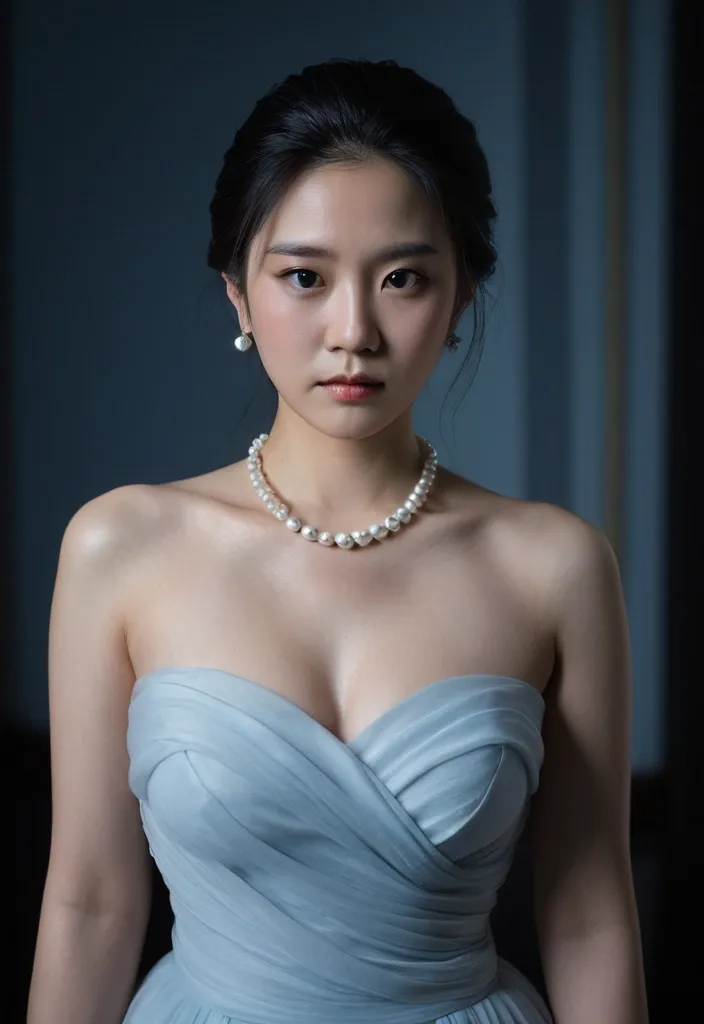
A woman of East Asian descent , likely in her 20s or 30s , is the central subject. She is positioned in the center of the image and is seen from the mid-chest up. She is wearing a light , pale-blue strapless gown with a draped , flowing texture. She has a pearl necklace and pearl earrings. Her hair is styled in a bun. Her facial expression is neutral to slightly melancholic. Her makeup is subtle , highlighting her facial features. Her skin tone is light , and she has a slender build. The background is out-of-focus , with a dark , shadowy ambiance suggesting an indoor setting , possibly a formal event. The lighting is soft and diffused , illuminating the subject and creating subtle highlights on her features. The overall style is elegant and sophisticated , reflecting a formal occasion. The image's composition is centered on the subject and focuses on her facial features and attire. The colors are primarily soft blues , light beiges , and dark backgrounds , creating a balanced and refined mood. ,
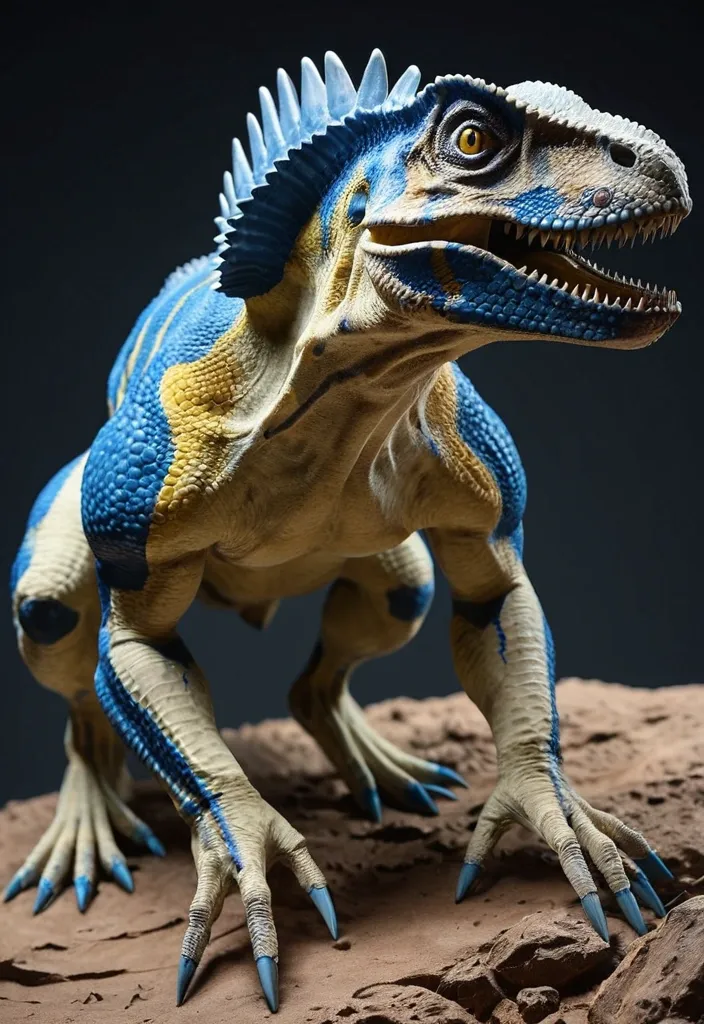
The hybrid was created by modifying the genome of a Tyrannosaurus rex , with the DNA of three other theropod species that were Utahraptor , Saurophaganax , and Giganotosaurus. Also the DNA of Quadrupes like Triceratops , and Scelidosaurus. DNA of modern animals such as Greater blue-ringed octopus , Inland Taipan , Northern Short-tailed Shrew , Komodo Dragon , Opossum , Mongoose , Gigantopithecus , Whiptail Lizard , Cuttlefish , and Tardigrades. The genome of Tyrannosaurus rex , Triceratops and Giganotosaurus was used as the base genome for the hybrid. Including the shape of the head in some parts from Giganotosaurus and Triceratops. Utahraptor DNA was added for high levels of intelligence and the ability to make plans , decisions and pack hunting. Reduced hind legs and Ape DNA added Knuckle-walking Quadruped. Triceratops , and Scelidosaurus were added to act as a biological form of armor that absorbed most of the incoming attacks. Northern short-tailed shrew , the Inland taipan's retractable fangs and the Komodo Dragon DNA was used to form the teeth of the Indominus that were used to tear through the flesh and armor of opponents. Saurophaganax and Gigantopithecus DNA added the presence of long strong arms with slashing hook claws and the use of tools. A swipe of the hybrid's claws would take down bigger opponents. While using tools for smaller elusive prey. Cuttlefish genes were intended to help the Venenosus withstand an accelerated growth , but it also added chromatophore cells in the skin so it could change the shape , color , and texture of its skin like a cuttlefish. Opossum , Mongoose and Tardigrades DNA was added for the Venenosus to be more resistant to climate changes , harmful toxins or bacterial infections , while tardigrades also added survival of extreme conditions such as exposure to extreme temperatures , extreme pressures , air deprivation , radiation , dehydration , and starvation. They have several defense mechanisms , including: A metabolic rate that gets as low as 0.01 percent of the normal rate. Organs protected by a sugary gel called trehalose. A protein that shields their DNA from radiation harm. Synthesis of cryoprotectant in chilly temperatures to prevent the development of ice crystals.Northern short-tailed shrew , the Inland Taipan , Greater blue-ringed octopus and the Komodo Dragon's DNA also added special cavities and glands in the skull that gave her infrared vision , and highly toxic saliva. Said DNA also gave her the ability to open her mandibles and jaws as wide as a snake , specifically at around 90 degrees.Lastly , DNA from a whiptail lizard was added for reproduction purposes. ,
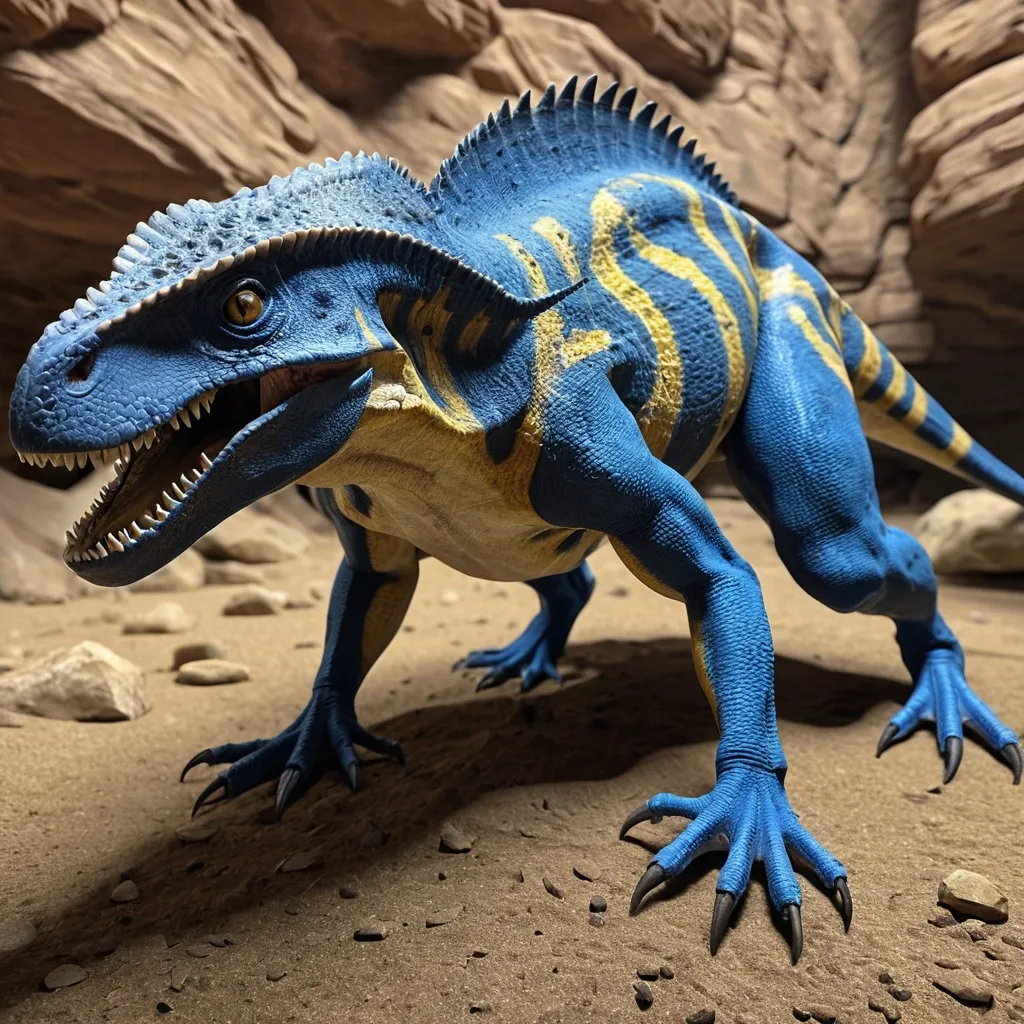
The hybrid was created by modifying the genome of a Tyrannosaurus rex , with the DNA of three other theropod species that were Utahraptor , Saurophaganax , and Giganotosaurus. Also the DNA of Quadrupes like Triceratops , and Scelidosaurus. DNA of modern animals such as Greater blue-ringed octopus , Inland Taipan , Northern Short-tailed Shrew , Komodo Dragon , Opossum , Mongoose , Gigantopithecus , Whiptail Lizard , Cuttlefish , and Tardigrades. The genome of Tyrannosaurus rex , Triceratops and Giganotosaurus was used as the base genome for the hybrid. Including the shape of the head in some parts from Giganotosaurus and Triceratops. Utahraptor DNA was added for high levels of intelligence and the ability to make plans , decisions and pack hunting. Reduced hind legs and Ape DNA added Knuckle-walking Quadruped. Triceratops , and Scelidosaurus were added to act as a biological form of armor that absorbed most of the incoming attacks. Northern short-tailed shrew , the Inland taipan's retractable fangs and the Komodo Dragon DNA was used to form the teeth of the Indominus that were used to tear through the flesh and armor of opponents. Saurophaganax and Gigantopithecus DNA added the presence of long strong arms with slashing hook claws and the use of tools. A swipe of the hybrid's claws would take down bigger opponents. While using tools for smaller elusive prey. Cuttlefish genes were intended to help the Venenosus withstand an accelerated growth , but it also added chromatophore cells in the skin so it could change the shape , color , and texture of its skin like a cuttlefish. Opossum , Mongoose and Tardigrades DNA was added for the Venenosus to be more resistant to climate changes , harmful toxins or bacterial infections , while tardigrades also added survival of extreme conditions such as exposure to extreme temperatures , extreme pressures , air deprivation , radiation , dehydration , and starvation. They have several defense mechanisms , including: A metabolic rate that gets as low as 0.01 percent of the normal rate. Organs protected by a sugary gel called trehalose. A protein that shields their DNA from radiation harm. Synthesis of cryoprotectant in chilly temperatures to prevent the development of ice crystals.Northern short-tailed shrew , the Inland Taipan , Greater blue-ringed octopus and the Komodo Dragon's DNA also added special cavities and glands in the skull that gave her infrared vision , and highly toxic saliva. Said DNA also gave her the ability to open her mandibles and jaws as wide as a snake , specifically at around 90 degrees.Lastly , DNA from a whiptail lizard was added for reproduction purposes. ,
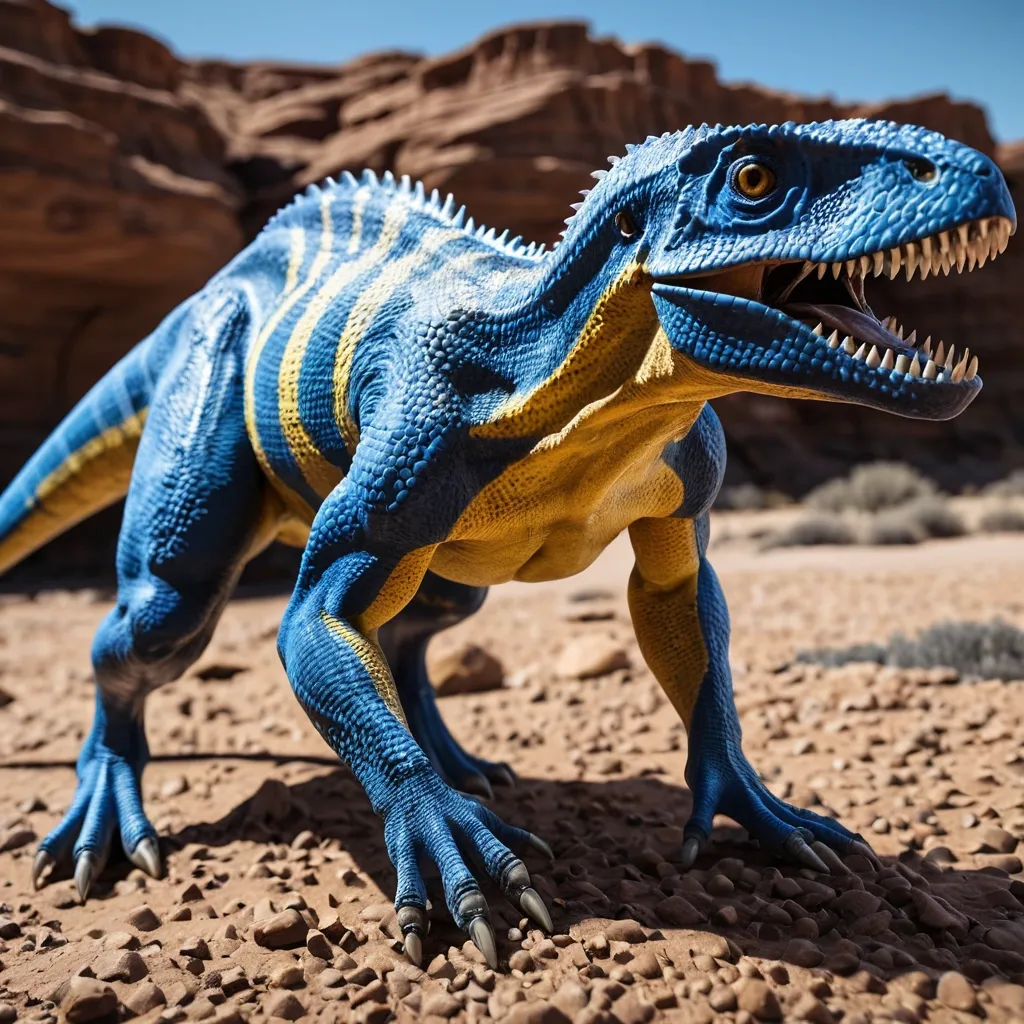
The hybrid was created by modifying the genome of a Tyrannosaurus rex , with the DNA of three other theropod species that were Utahraptor , Saurophaganax , and Giganotosaurus. Also the DNA of Quadrupes like Triceratops , and Scelidosaurus. DNA of modern animals such as Greater blue-ringed octopus , Inland Taipan , Northern Short-tailed Shrew , Komodo Dragon , Opossum , Mongoose , Gigantopithecus , Whiptail Lizard , Cuttlefish , and Tardigrades. The genome of Tyrannosaurus rex , Triceratops and Giganotosaurus was used as the base genome for the hybrid. Including the shape of the head in some parts from Giganotosaurus and Triceratops. Utahraptor DNA was added for high levels of intelligence and the ability to make plans , decisions and pack hunting. Reduced hind legs and Ape DNA added Knuckle-walking Quadruped. Triceratops , and Scelidosaurus were added to act as a biological form of armor that absorbed most of the incoming attacks. Northern short-tailed shrew , the Inland taipan's retractable fangs and the Komodo Dragon DNA was used to form the teeth of the Indominus that were used to tear through the flesh and armor of opponents. Saurophaganax and Gigantopithecus DNA added the presence of long strong arms with slashing hook claws and the use of tools. A swipe of the hybrid's claws would take down bigger opponents. While using tools for smaller elusive prey. Cuttlefish genes were intended to help the Venenosus withstand an accelerated growth , but it also added chromatophore cells in the skin so it could change the shape , color , and texture of its skin like a cuttlefish. Opossum , Mongoose and Tardigrades DNA was added for the Venenosus to be more resistant to climate changes , harmful toxins or bacterial infections , while tardigrades also added survival of extreme conditions such as exposure to extreme temperatures , extreme pressures , air deprivation , radiation , dehydration , and starvation. They have several defense mechanisms , including: A metabolic rate that gets as low as 0.01 percent of the normal rate. Organs protected by a sugary gel called trehalose. A protein that shields their DNA from radiation harm. Synthesis of cryoprotectant in chilly temperatures to prevent the development of ice crystals.Northern short-tailed shrew , the Inland Taipan , Greater blue-ringed octopus and the Komodo Dragon's DNA also added special cavities and glands in the skull that gave her infrared vision , and highly toxic saliva. Said DNA also gave her the ability to open her mandibles and jaws as wide as a snake , specifically at around 90 degrees.Lastly , DNA from a whiptail lizard was added for reproduction purposes. ,
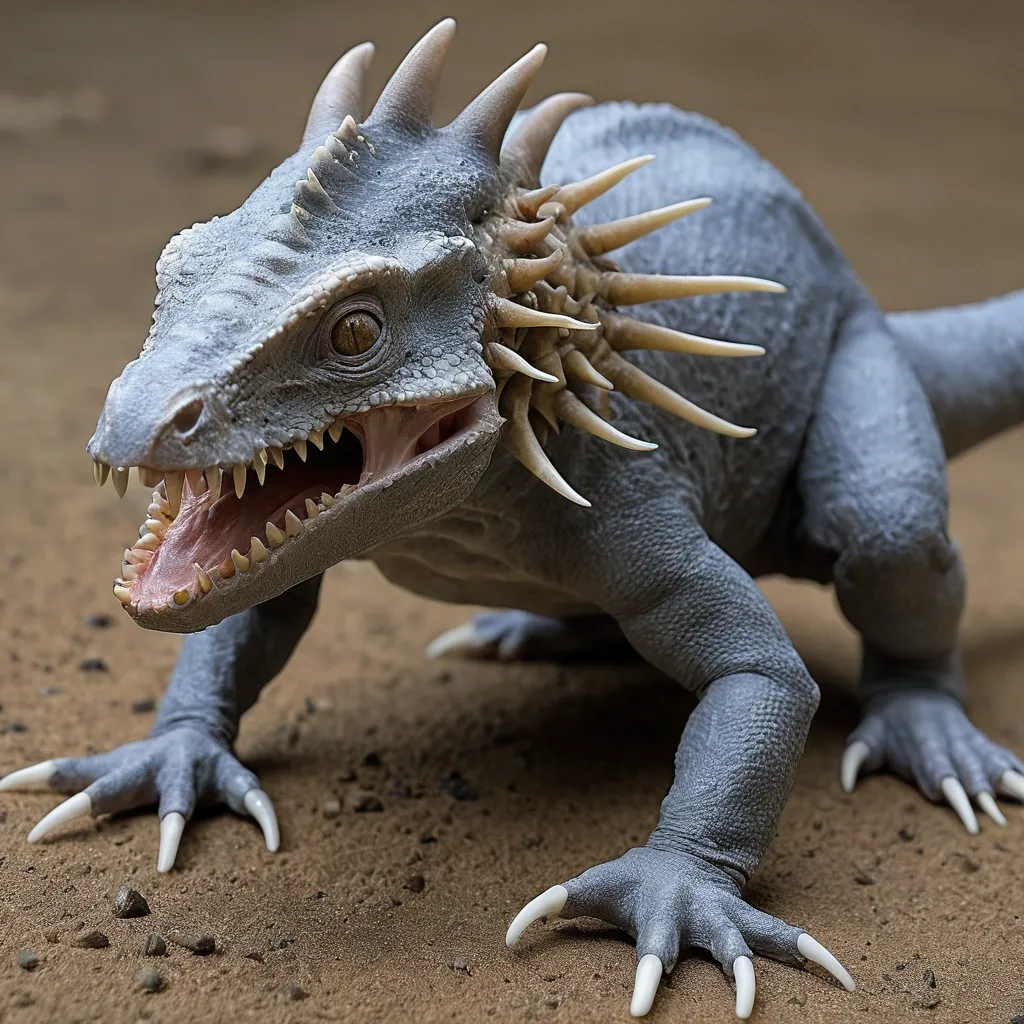
The genome of Tyrannosaurus rex , Triceratops and Giganotosaurus was used as the base genome for the hybrid. Including the shape of the head in some parts from Triceratops. Utahraptor DNA was added for high levels of intelligence and the ability to make plans , decisions and pack hunting. Reduced hind legs and Ape DNA added Knuckle-walking Quadruped. Triceratops , and Scelidosaurus were added to act as a biological form of armor that absorbed most of the incoming attacks. Northern short-tailed shrew , the Inland taipan's retractable fangs and the Komodo Dragon DNA was used to form the teeth of the Indominus that were used to tear through the flesh and armor of opponents. Saurophaganax and Gigantopithecus DNA added the presence of long strong arms with slashing hook claws and the use of tools. A swipe of the hybrid's claws would take down bigger opponents. While using tools for smaller elusive prey. Cuttlefish genes were intended to help the Venenosus withstand an accelerated growth , but it also added chromatophore cells in the skin so it could change the shape , color , and texture of its skin like a cuttlefish. Opossum , Mongoose and Tardigrades DNA was added for the Venenosus to be more resistant to climate changes , harmful toxins or bacterial infections , while tardigrades also added survival of extreme conditions such as exposure to extreme temperatures , extreme pressures , air deprivation , radiation , dehydration , and starvation. They have several defense mechanisms , including: A metabolic rate that gets as low as 0.01 percent of the normal rate. Organs protected by a sugary gel called trehalose. A protein that shields their DNA from radiation harm. Synthesis of cryoprotectant in chilly temperatures to prevent the development of ice crystals.Northern short-tailed shrew , the Inland Taipan , Greater blue-ringed octopus and the Komodo Dragon's DNA also added special cavities and glands in the skull that gave her infrared vision , and highly toxic saliva. Said DNA also gave her the ability to open her mandibles and jaws as wide as a snake , specifically at around 90 degrees.Lastly , DNA from a whiptail lizard was added for reproduction purposes. ,
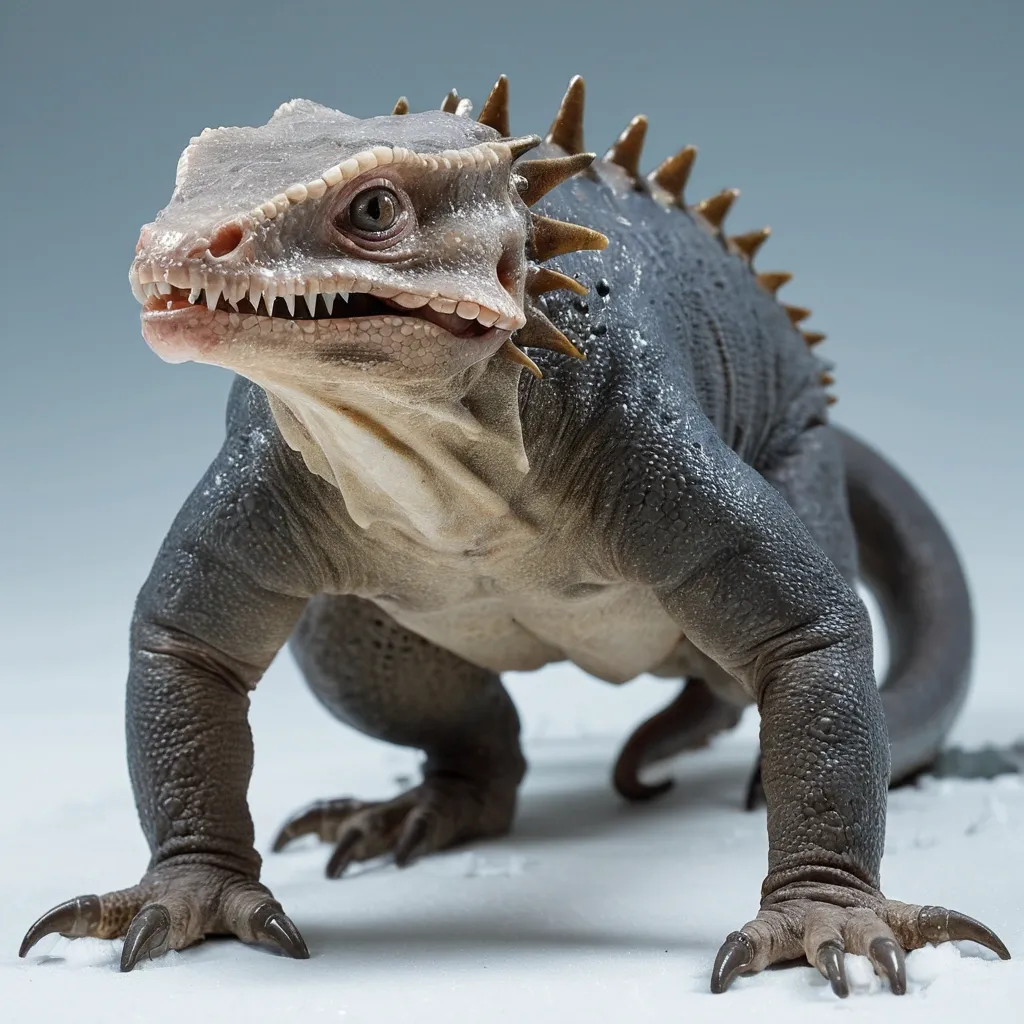
The genome of Tyrannosaurus rex , Triceratops and Giganotosaurus was used as the base genome for the hybrid. Including the shape of the head in some parts from Triceratops. Utahraptor DNA was added for high levels of intelligence and the ability to make plans , decisions and pack hunting. Reduced hind legs and Ape DNA added Knuckle-walking Quadruped. Triceratops , and Scelidosaurus were added to act as a biological form of armor that absorbed most of the incoming attacks. Northern short-tailed shrew , the Inland taipan's retractable fangs and the Komodo Dragon DNA was used to form the teeth of the Indominus that were used to tear through the flesh and armor of opponents. Saurophaganax and Gigantopithecus DNA added the presence of long strong arms with slashing hook claws and the use of tools. A swipe of the hybrid's claws would take down bigger opponents. While using tools for smaller elusive prey. Cuttlefish genes were intended to help the Venenosus withstand an accelerated growth , but it also added chromatophore cells in the skin so it could change the shape , color , and texture of its skin like a cuttlefish. Opossum , Mongoose and Tardigrades DNA was added for the Venenosus to be more resistant to climate changes , harmful toxins or bacterial infections , while tardigrades also added survival of extreme conditions such as exposure to extreme temperatures , extreme pressures , air deprivation , radiation , dehydration , and starvation. They have several defense mechanisms , including: A metabolic rate that gets as low as 0.01 percent of the normal rate. Organs protected by a sugary gel called trehalose. A protein that shields their DNA from radiation harm. Synthesis of cryoprotectant in chilly temperatures to prevent the development of ice crystals.Northern short-tailed shrew , the Inland Taipan , Greater blue-ringed octopus and the Komodo Dragon's DNA also added special cavities and glands in the skull that gave her infrared vision , and highly toxic saliva. Said DNA also gave her the ability to open her mandibles and jaws as wide as a snake , specifically at around 90 degrees.Lastly , DNA from a whiptail lizard was added for reproduction purposes. ,
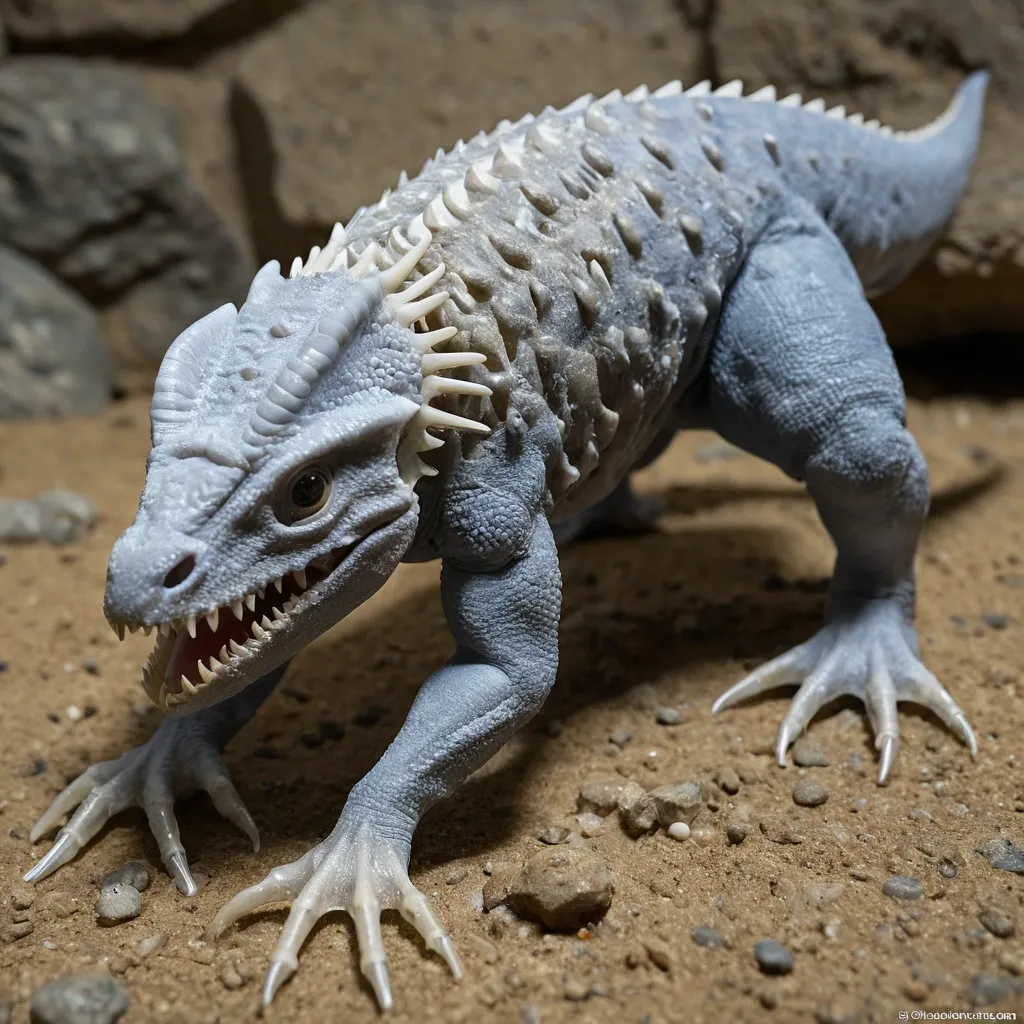
The genome of Tyrannosaurus rex , Triceratops and Giganotosaurus was used as the base genome for the hybrid. Including the shape of the head in some parts from Triceratops. Utahraptor DNA was added for high levels of intelligence and the ability to make plans , decisions and pack hunting. Reduced hind legs and Ape DNA added Knuckle-walking Quadruped. Triceratops , and Scelidosaurus were added to act as a biological form of armor that absorbed most of the incoming attacks. Northern short-tailed shrew , the Inland taipan's retractable fangs and the Komodo Dragon DNA was used to form the teeth of the Indominus that were used to tear through the flesh and armor of opponents. Saurophaganax and Gigantopithecus DNA added the presence of long strong arms with slashing hook claws and the use of tools. A swipe of the hybrid's claws would take down bigger opponents. While using tools for smaller elusive prey. Cuttlefish genes were intended to help the Venenosus withstand an accelerated growth , but it also added chromatophore cells in the skin so it could change the shape , color , and texture of its skin like a cuttlefish. Opossum , Mongoose and Tardigrades DNA was added for the Venenosus to be more resistant to climate changes , harmful toxins or bacterial infections , while tardigrades also added survival of extreme conditions such as exposure to extreme temperatures , extreme pressures , air deprivation , radiation , dehydration , and starvation. They have several defense mechanisms , including: A metabolic rate that gets as low as 0.01 percent of the normal rate. Organs protected by a sugary gel called trehalose. A protein that shields their DNA from radiation harm. Synthesis of cryoprotectant in chilly temperatures to prevent the development of ice crystals.Northern short-tailed shrew , the Inland Taipan , Greater blue-ringed octopus and the Komodo Dragon's DNA also added special cavities and glands in the skull that gave her infrared vision , and highly toxic saliva. Said DNA also gave her the ability to open her mandibles and jaws as wide as a snake , specifically at around 90 degrees.Lastly , DNA from a whiptail lizard was added for reproduction purposes. ,

The genome of Tyrannosaurus rex , Triceratops and Giganotosaurus was used as the base genome for the hybrid. Including the shape of the head in some parts from Triceratops. Utahraptor DNA was added for high levels of intelligence and the ability to make plans , decisions and pack hunting. Reduced hind legs and Ape DNA added Knuckle-walking Quadruped. Triceratops , and Scelidosaurus were added to act as a biological form of armor that absorbed most of the incoming attacks. Northern short-tailed shrew , the Inland taipan's retractable fangs and the Komodo Dragon DNA was used to form the teeth of the Indominus that were used to tear through the flesh and armor of opponents. Saurophaganax and Gigantopithecus DNA added the presence of long strong arms with slashing hook claws and the use of tools. A swipe of the hybrid's claws would take down bigger opponents. While using tools for smaller elusive prey. Cuttlefish genes were intended to help the Venenosus withstand an accelerated growth , but it also added chromatophore cells in the skin so it could change the shape , color , and texture of its skin like a cuttlefish. Opossum , Mongoose and Tardigrades DNA was added for the Venenosus to be more resistant to climate changes , harmful toxins or bacterial infections , while tardigrades also added survival of extreme conditions such as exposure to extreme temperatures , extreme pressures , air deprivation , radiation , dehydration , and starvation. They have several defense mechanisms , including: A metabolic rate that gets as low as 0.01 percent of the normal rate. Organs protected by a sugary gel called trehalose. A protein that shields their DNA from radiation harm. Synthesis of cryoprotectant in chilly temperatures to prevent the development of ice crystals.Northern short-tailed shrew , the Inland Taipan , Greater blue-ringed octopus and the Komodo Dragon's DNA also added special cavities and glands in the skull that gave her infrared vision , and highly toxic saliva. Said DNA also gave her the ability to open her mandibles and jaws as wide as a snake , specifically at around 90 degrees.Lastly , DNA from a whiptail lizard was added for reproduction purposes. ,





